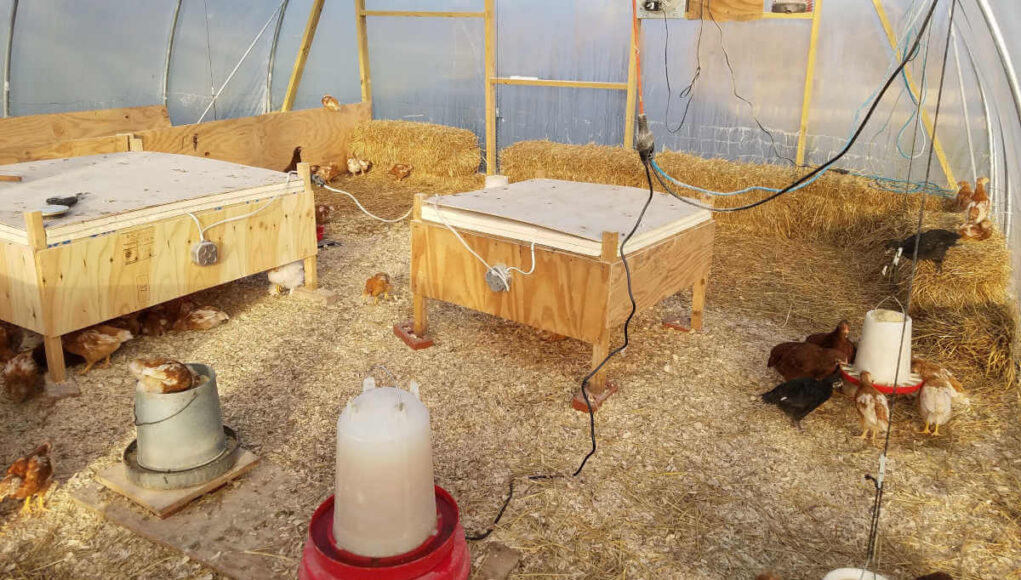Raising healthy chicks is a rewarding and enjoyable experience for chicken enthusiasts. A crucial element in nurturing baby chicks is the use of a climate-controlled brooder box. This essential tool ensures that chicks grow up in a safe and optimal environment, thereby increasing their chances of thriving into healthy adult chickens.
The climate-controlled brooder box plays a significant role in maintaining the delicate balance of temperature and humidity, which is vital for chick survival. By using a brooder box that offers precise environmental control, chicken lovers can provide their chicks with the best start in life.

Why Use a Climate-Controlled Brooder Box?
A climate-controlled brooder box provides a stable and secure environment for chicks. Temperature fluctuations can cause stress and health issues for young chicks. A brooder box with climate control ensures that the temperature remains consistent, reducing the risk of hypothermia or overheating.
Additionally, controlling the climate within the brooder box helps in preventing diseases by minimizing moisture levels. Chicks are less likely to develop illnesses such as coccidiosis in a well-regulated environment.
Temperature Requirements for Chicks
Chicks require a warm environment to mimic the warmth they would receive from a mother hen. Typically, the brooder box should be set to around 95F (35C) during the first week. Gradually, the temperature should be decreased by 5F (about 2.8C) each week until it reaches the ambient room temperature.
Using a climate-controlled brooder box allows for accurate temperature adjustments, ensuring that chicks remain comfortable and healthy.
Humidity Levels in the Brooder Box
Maintaining appropriate humidity levels is crucial for chick health. High humidity can lead to respiratory issues, while low humidity might cause dehydration. Ideally, the humidity in a climate-controlled brooder box should be kept between 50% and 60%.
Design Features of a Climate-Controlled Brooder Box
A climate-controlled brooder box should have several features to ensure the safety and comfort of the chicks. These include adjustable heating elements, proper ventilation, and secure housing to prevent predators from entering.
Heating Elements
Heating elements are critical in a climate-controlled brooder box. These can include heat lamps, heating pads, or ceramic heaters. The choice of heating depends on the size of the brooder and the number of chicks.
Modern brooder boxes often come with digital thermostats that allow precise temperature control, providing peace of mind to chicken keepers.
Ventilation Systems
Proper ventilation is necessary to maintain air quality within the brooder box. Ventilation helps in dispersing excess heat and moisture, reducing the risk of respiratory problems in chicks.
A well-designed climate-controlled brooder box will have adjustable vents that enable airflow without creating drafts, which could chill the chicks.
Choosing the Right Brooder Box
When selecting a climate-controlled brooder box, consider the number of chicks you plan to raise and the available space. Brooder boxes come in various sizes and designs, from simple DIY setups to sophisticated commercial models.
For those interested in learning more about space-saving brooder designs, visit this space-saving chick brooder guide.
Size and Capacity
The brooder box should be spacious enough to allow chicks to move freely without overcrowding. Overcrowding can lead to stress and aggressive behavior among chicks.
As chicks grow, the space requirements increase. It’s important to anticipate the growth and ensure the brooder box accommodates the chicks comfortably.
Material and Construction
Brooder boxes can be made from various materials, including wood, plastic, or metal. Each material has its pros and cons. Wooden boxes offer insulation but can absorb moisture, while plastic is easy to clean but may not provide adequate insulation.
For those on a budget, consider exploring this chick brooder under $50 guide for affordable options.
Setting Up Your Brooder Box
Once you have selected the perfect climate-controlled brooder box, setting it up correctly is crucial. Proper setup ensures a healthy start for your chicks.
Preparing the Brooder
Before introducing chicks, clean and disinfect the brooder box. Lay down a layer of bedding material, such as wood shavings or straw, to provide comfort and absorb waste.
Position the heating elements to create a warm zone within the brooder box. Ensure the temperature is stable before introducing the chicks.
Introducing Chicks
When introducing chicks to the climate-controlled brooder box, do it gently to avoid stress. Monitor their behavior to ensure they are comfortable. Chicks should be active and curious, indicating they are warm and content.
Maintaining Your Brooder Box
Regular maintenance of the climate-controlled brooder box is essential for chick health. Keep the brooder clean and check temperature and humidity levels daily.
For a detailed maintenance schedule, visit this chick brooder maintenance schedule guide.
Cleaning and Hygiene
Regularly change the bedding and clean the brooder box to prevent the buildup of bacteria and ammonia. This practice reduces the risk of disease and ensures a healthy environment for the chicks.
Pay attention to the water and food dishes, ensuring they are always clean and free from contaminants.
Monitoring Chick Health
Keep an eye on the chicks for any signs of illness or discomfort. Healthy chicks are active and have clear eyes and smooth feathers.
Introduce grit to their diet when necessary by following guidelines from this grit introduction guide.

FAQs About Climate-Controlled Brooder Boxes
1. What is the ideal temperature for a brooder box?
The ideal temperature for a brooder box starts at 95F (35C) and decreases by 5F weekly until it reaches room temperature.
2. How do I maintain humidity in a brooder box?
Maintain humidity by ensuring proper ventilation and using a hygrometer to monitor levels. Aim for 50% to 60% humidity.
3. Can I use a regular box as a brooder?
While a regular box can work temporarily, a climate-controlled brooder box provides better temperature and humidity control, crucial for chick health.
For more insights on raising chicks, visit this external guide.
This article contains affiliate links. We may earn a commission at no extra cost to you.











